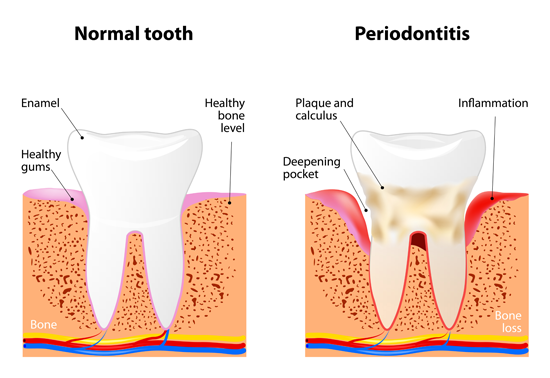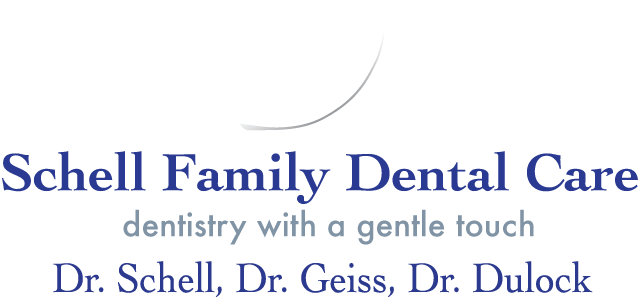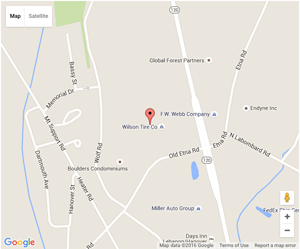Periodontal Disease
 What is Periodontal Disease?
What is Periodontal Disease?
Periodontal disease (also known as gum disease) is a bacterial infection of the gum tissue and the bone that hold teeth in place. One contributor to periodontal disease is plaque, an invisible film of bacteria that sticks to teeth and gums. These bacteria cause irritation of the tissue and this can lead to chronic inflammation and bone loss. Plaque that is not completely removed may calcify and form tartar (calculus) which adheres tightly to the teeth or forms at and underneath the gum line, where it and can irritate gum tissues. Bacteria flourish in the vicinity of the rough tartar. If you are a coffee drinker or smoker, tartar also causes cosmetic issues, as it easily absorbs stains. Tartar can only be removed by your hygienist.
Risk Factors for Periodontal Disease
Individual patient risk factors such as smoking, diabetes and medications put you at increased risk of periodontal disease. It is diagnosed during dental examinations using periodontal screening tools to measure the space between the tooth and the gum (the pocket), bleeding, inflammation, recession and mobility.
The link between Periodontal Disease and Poor Overall Health
Periodontal disease is associated with the following: increased risk for heart attack and stroke, difficulty in controlling diabetes, low birth weight babies, preterm babies and miscarriages. Periodontitis involves irreversible damage to the gums and supporting structures of the teeth and can result in tooth loss. Gingivitis is the initial stage of periodontal disease and is characterized by inflamed bleeding gum tissue. It is reversible with treatment.
Prevention is Key
Prevention consists of daily home care including brushing and flossing and regular dental checkups and cleanings. Periodontal disease is treated with professional periodontal therapy called scaling and root planing, which involves thoroughly removing all tartar from the teeth and smoothing the root surface.
Scaling and Root Planing
Scaling and root planing is a nonsurgical method of treating periodontal disease. The scaling technique removes tartar and plaque above and below the gum line. A local anesthetic may be given to reduce any discomfort during the procedure.
Using the appropriate instruments, plaque and tartar are carefully removed down to the bottom of each periodontal pocket. The tooth’s root surfaces are then smoothed or planed. This procedure allows the gum tissue to heal. Depending on the extent of your disease, the dentist may recommend that one or more sections (called quadrants) of your mouth be treated with scaling and root planing. Treatment may require several visits.
The following is the cleaning that will be required after surgical or nonsurgical periodontal therapy.
Periodontal Maintenance
There is NO CURE for periodontal disease; it can only be managed or controlled. The bacteria that cause periodontal disease re-establish quickly after treatment. A 3 month re-care visit is critically timed to disrupt harmful bacteria in pockets greater than 4 millimeters in order to disable the destructive process at its critical stage—the stage when the bacteria and their poisons do most harm to the supporting structures—namely, what is known to your dental staff as the periodontal attachment.

